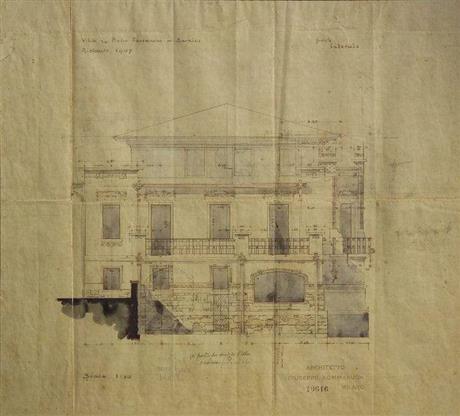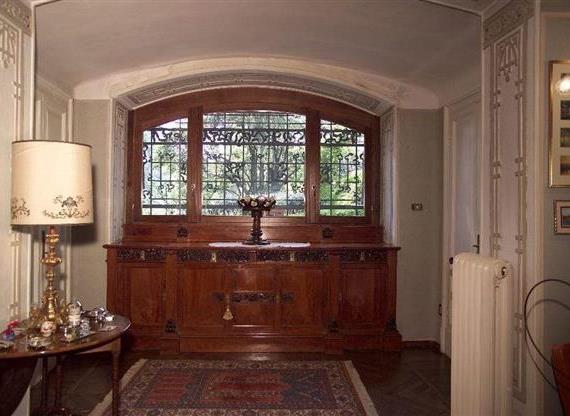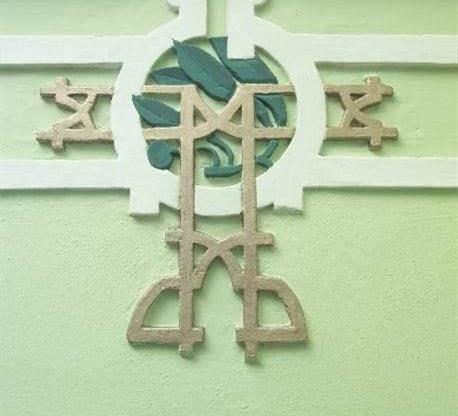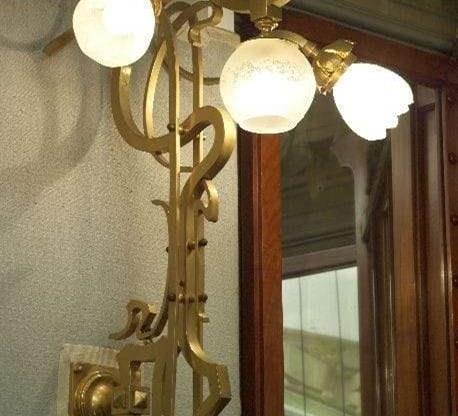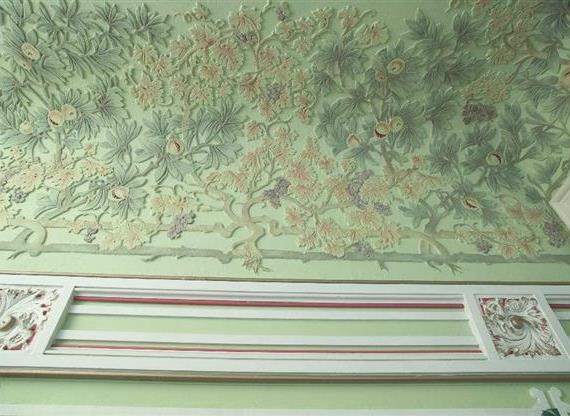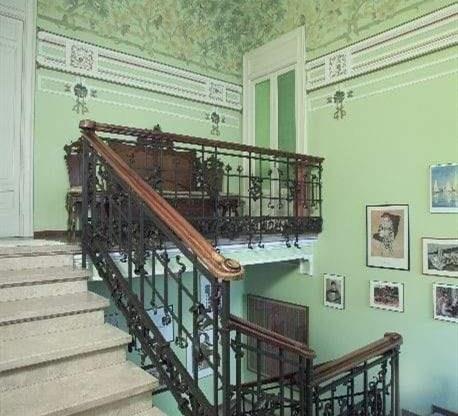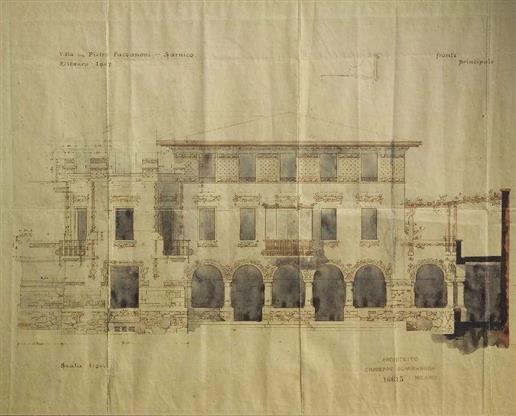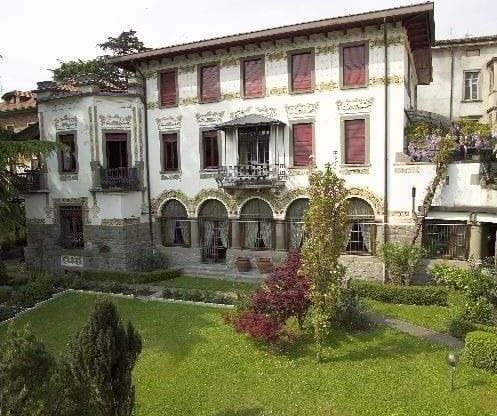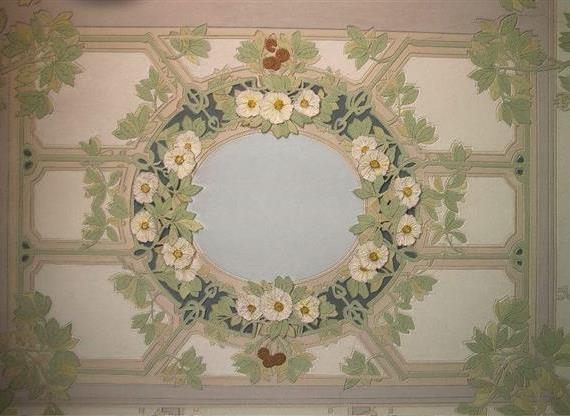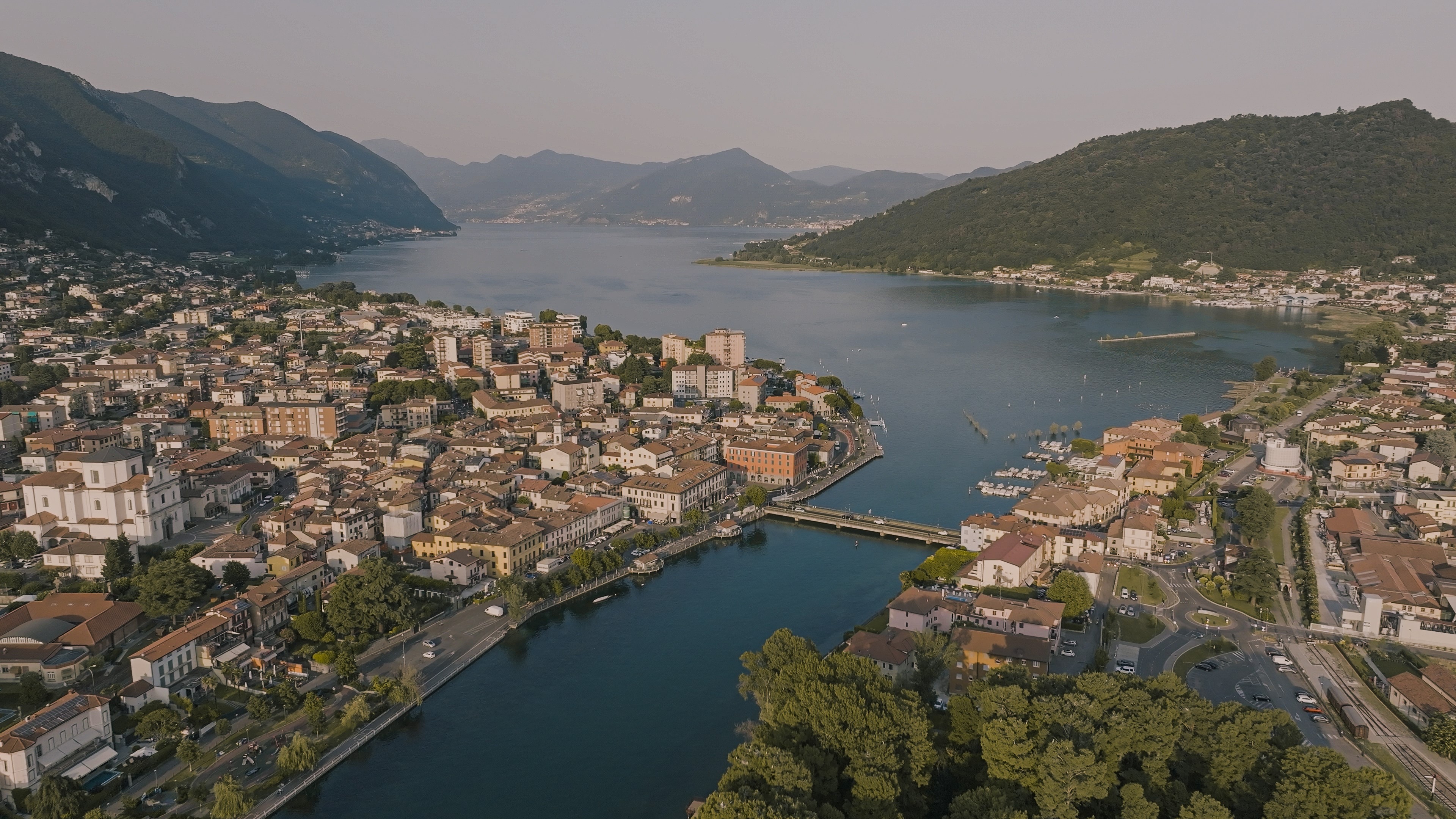
Ch. 5 - VILLA PIETRO FACCANONI, NOW PASSERI (1907)
Address: Viale Orgnieri, 1 - Sarnico (BG)
Historical-artistic notes
Today’s Viale Orgnieri did not exist at that time, writes Giorgi in “Faccanoni” and there was a place called “Piè degli Orti” where the avenue is now. Here there was a small spinning mill where Pietro Faccanoni decided to settle. Pietro Faccanoni (born on 14th March 1857) married Emilia Faccanoni in 1880 and he lived in this villa until his death in 1943, when he was buried in the mausoleum. Out of a spirit of philanthropy and the honour the memory of his only son who died in the First World War, he gave Sarnico a hospital which opened in 1933. on several occasions, he was the Town Councillor of Sarnico and he was elected Mayor in 1912 for eight years. In 1897 he was the director of the Italian firm that built aqueducts in Vienna. His two brothers, Giuseppe and Luigi, also took part in this colossal enterprise to bring water to the city of Vienna and this was the basis of their economic fortune.
After the death of Pietro Faccanoni, the house was sold to Dr. Luigi Passeri.
The only documentation that can be found in contemporary writing is by Monneret de Villard.
Other existing graphic documentation (two watercolor heliographic copies) is still in the hands of the current owners, the Passeri family.
Pietro Faccanoni had the spinning mill renovated by his friend Sommaruga, enlarging only the part of the drawing room.
In this case, Sommaruga succeeded in creating a work where some usual characteristic elements of his style – the band joining the windows, the ribbon motifs that are interwoven with the floral designs – are free of their habitual plastic aggressiveness, flattening out into a two-dimensional rendering of graphic taste, according to a technique which he used on several occasions, but above all in the interior decoration.
Alessandro Mazzucotelli was also commissioned with the creation of all the decorative ironwork for this villa: the outer garden gate with relative railings, banisters, gratings for doors and windows, lampposts, and other ornamental elements. The subjects are based on the study of the flat ribbon, an ornamental motif also used in the other two villas. There are fewer plant motifs on the railings in the Villa Passeri and only some floral decorations on the tips of the iron ribbons. A spear-headed ribbon runs the whole length of the upper part, recalling its original defensive function. The entire decoration of the railings is further scaled down to scenographic taste.
Like other architects of his time, Sommaruga also designed the interiors of his buildings; in the majority of cases, the original furnishings have been lost, either because the buildings have changed their purpose (Palazzo Castiglione and Columbus Nursing Home, for example) or because of changes in taste and style.
Only in this villa, however, some of the original furniture can be found, including a dining room designed by Sommaruga. The taste for global furniture, with “boiseries” and wall furniture, is shared with the great cabinet-maker Quarti in this interior decoration.
Eugenio Quarti used very expensive wood (Cuban teak) for the furniture in this villa.
The same care in craftsmanship is given to the rest of the interior: the large staircase with the wrought iron banister, the brass lamps close to the Prague fashion as in the House of the Municipalities, a large and magnificently sculpted fireplace, the decorations in graffito cement over the vault of the stairs and the loggia with light patterns of flowered arbors. And everything is in an excellent state of preservation.
In “Faccanoni” by A. Giorgi
Predore, 1995
In “G. Sommaruga” by E. Bairati / D. Riva
Mazzotta, Milan, 1982
In “Sarnico” edited by A. Vaini
Sarnico, 1986



